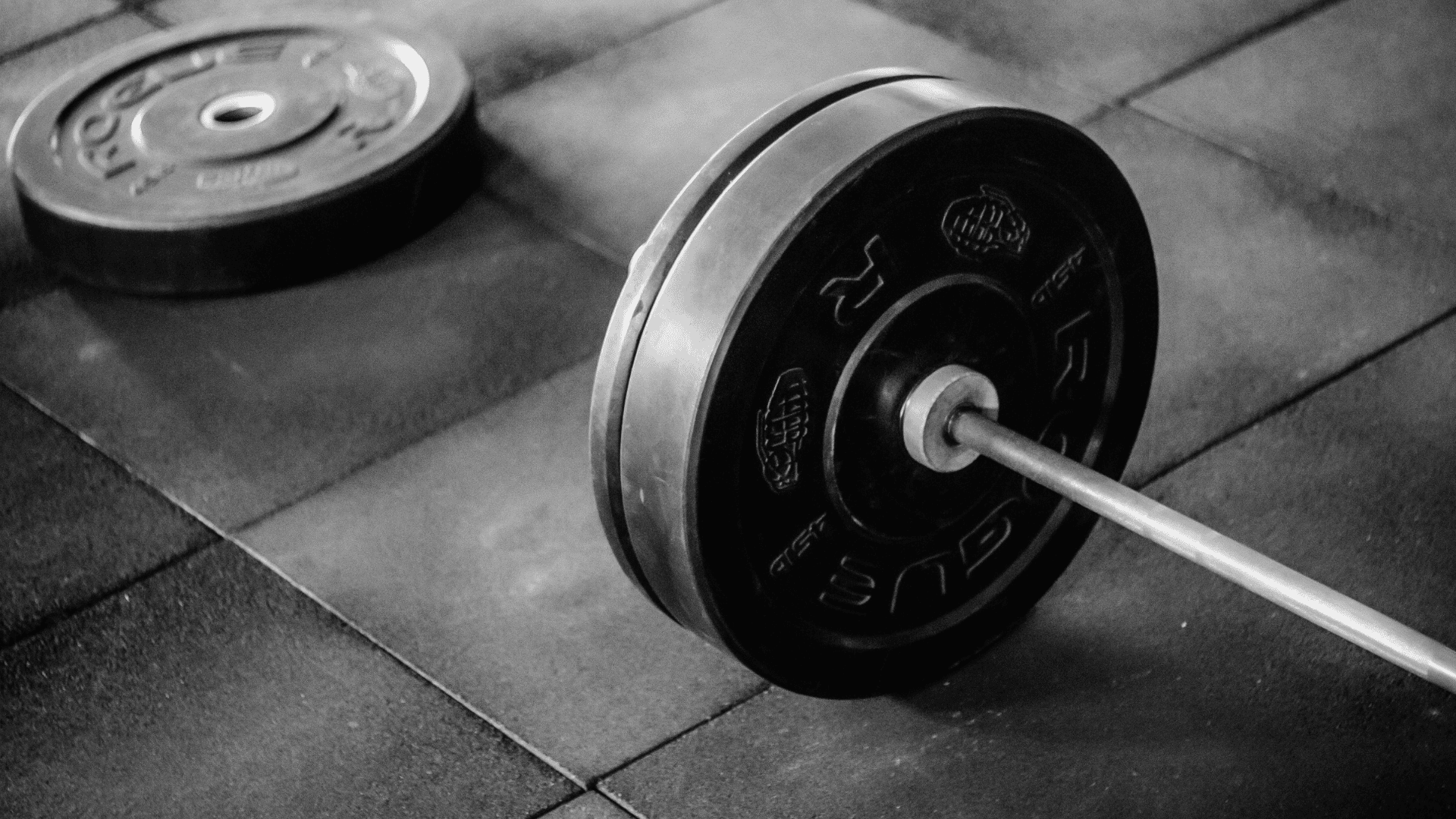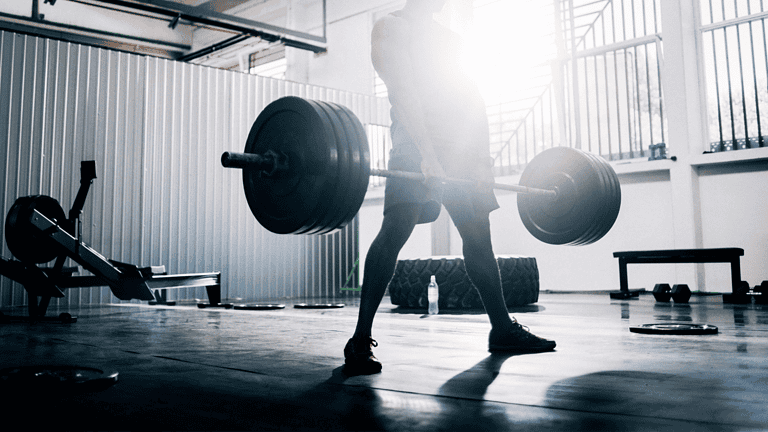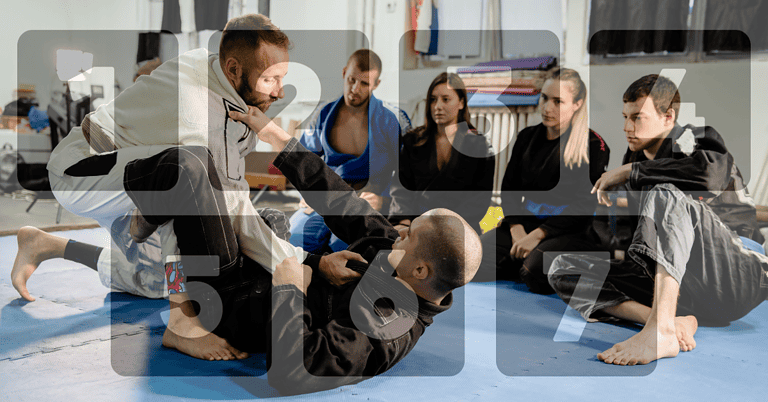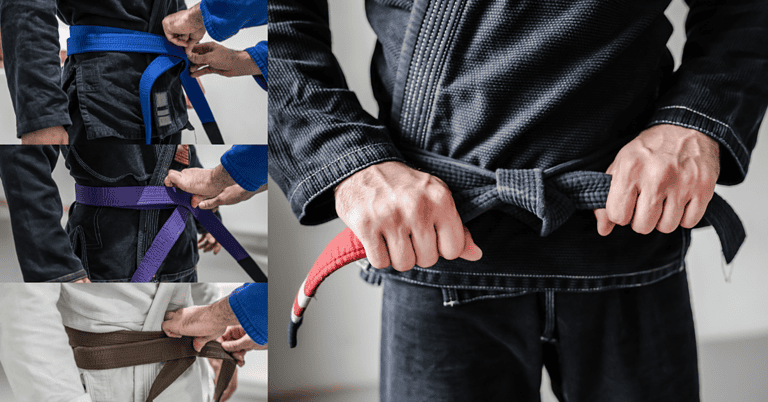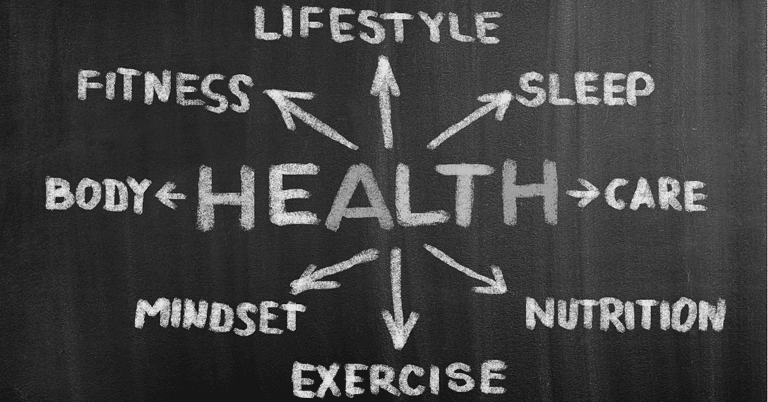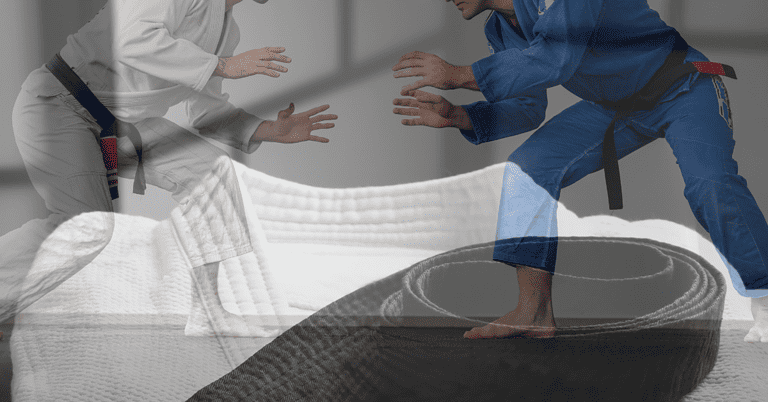Best Strength Exercises for Men Over 40: Build Muscle in 2025
Did you know that men typically lose 3-5% of their muscle mass per decade after age 30? This number can even be as high as 8%, and muscle loss can happen at an even higher rate after the age of 60. As depressing as that might sound to those of us who are getting up there in years, there is some good news – studies show that proper strength training can not only halt this decline but actually reverse it!
I think my personal strength training journey is a testament to this. Having survived the big 4-0, thrived in my 40s, and now reached the big 5-0, I’m leaner and more muscular than I’ve ever been. I’d even argue that I’m in the best shape of my life, so I feel confident in saying that your best days might still be ahead of you.
With that in mind, I’m going to share what I believe to be the most effective exercises to help you build strength and muscle while protecting your joints and preventing injury. Whether you’re new to strength training or getting back into it, these exercises will help you achieve your fitness goals safely and effectively.
For a broader discussion of the different things you need to take into consideration when working to build muscle after 40, check out our guide. In this article, we’ll be focusing specifically on the best strength exercises.
Best Strength Exercises for Men Over 40: Build Muscle in 2025
Essential Compound Exercises for Full-Body Strength
After nearly 4 decades of training (and making plenty of mistakes along the way), I’ve learned that compound exercises that target multiple muscle groups simultaneously are foundational to a workout routine. They can serve as full body strength training exercises that are absolute gold for building muscle and make for a well-rounded workout plan.
But these compound exercises have additional benefits that go beyond strength and conditioning and muscle growth. For example, these compound exercises can help boost natural production of testosterone and growth hormone, both of which tend to decline with age. This can help maintain muscle mass, energy levels, and overall metabolic health, which is very important when you’re over 40. They can also help maintain and even increase bone density, reducing the risk of osteoporosis. So let me share some hard-earned wisdom about making these powerhouse movements work for you.
Deadlifts
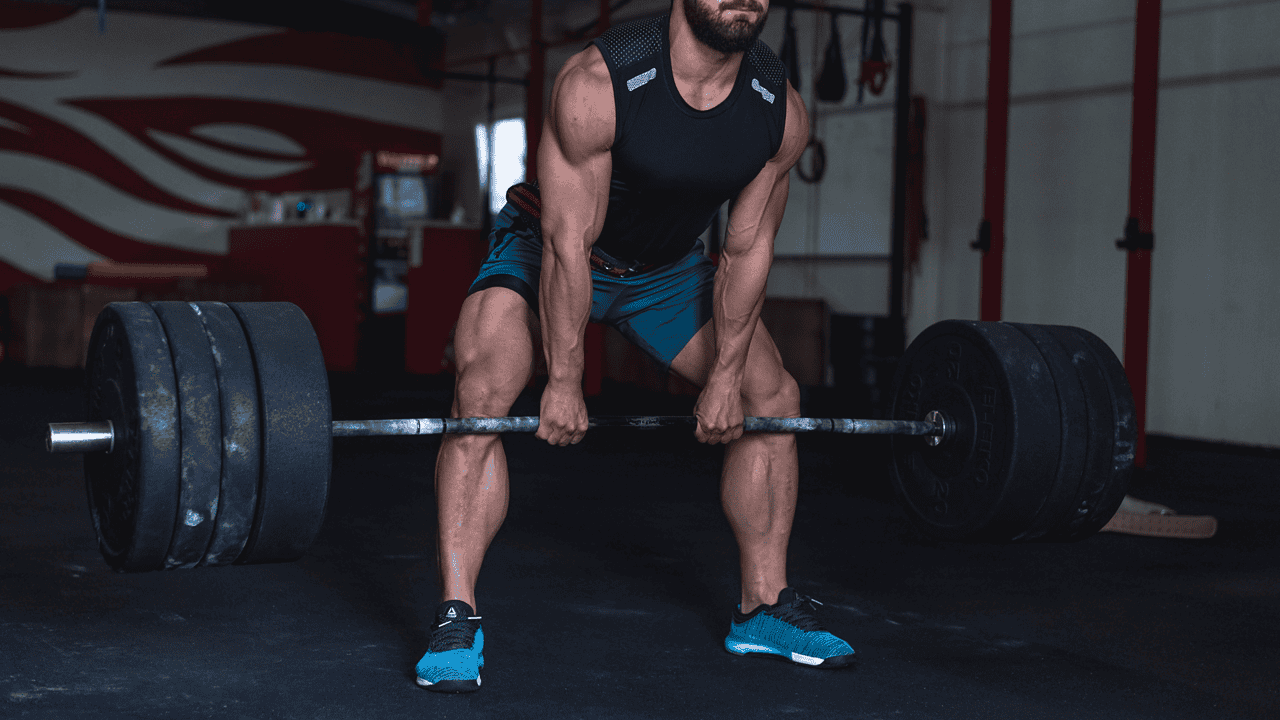
Let’s start with deadlifts because these are a critical component of an effective workout plan and an area where I see so many people get derailed… either because they do deadlifts wrong or they don’t do them at all.
Deadlifts provide many benefits that are especially important as we age. Deadlifts engage the entire core musculature and posterior chain, which is crucial for maintaining good posture and preventing back pain. Deadlifts also mimic everyday activities like picking up objects, making daily tasks easier and reducing injury risk.
I think you should definitely include deadlifts in your training program, but trying to lift too heavy or lifting with bad form is just asking for a back injury. So start with lower weight, understand that you need to engage your core, focus on developing proper form, and then increase weight as you become stronger and more confident with the movement.
If you find conventional barbell deadlifts too challenging or uncomfortable, don’t just drop deadlifts from your workout altogether. Instead try some variations. For example, you can try the trap bar deadlift. The more neutral grip position and centered load make it much more back-friendly while still hitting all of the important muscle groups.
If you find trap bar deadlifts are still too challenging… or if you just don’t have access to a trap bar… try including rack pulls or Romanian Deadlifts (aka RDLs) in your workout plan. With rack pulls, starting with the bar around knee height in a rack lets you focus on mastering hip hinge patterns without compromising your lower back. Similarly, you can start RDLs in a rack and then focus on lowering the weight with a focus on your hip hinge and without going all the way down to the floor.
You can also try deadlifts (and deadlift variations) using a kettlebell instead of a barbell. While you’ll be limited in terms of the maximum weight you can use, kettlebells can help you build up your strength and develop proper movement patterns before trying heavier weight on a barbell.
Squats
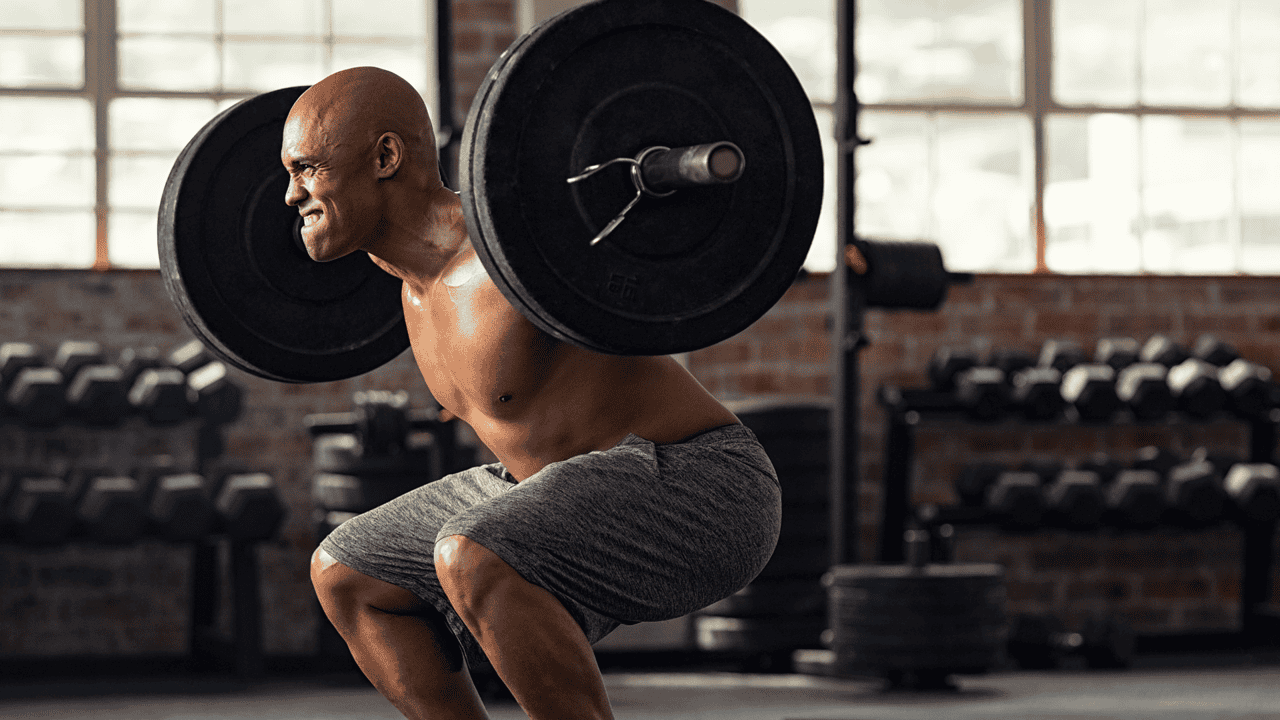
Now let’s talk about squats. Squats are another very important compound movement that you need to be doing, and they don’t have to be knee killers! Just as we saw with deadlifts, the key is not going too heavy too fast and making sure you have proper form.
Squats target major muscle groups in the legs and core, building strength in the quadriceps, hamstrings, and glutes, and helping combat age-related muscle loss. Strong legs make everyday activities like climbing stairs easier and are crucial for maintaining independence and quality of life as we age. Regular squatting also helps maintain mobility in hips and knees, strengthening stabilizing muscles around these crucial joints, lubricating them, and potentially reducing arthritis risk. Squats can also improve proprioception which, combined with the increased core strength, can reduce fall risk and enhance overall stability – particularly important as balance naturally declines with age.
When you’re just getting started, box squats can be a good option because they teach perfect depth control and allow you to focus on maintaining consistent form. So instead of squatting into empty space, have a box (or similar object like a bench) behind you that’s height matches your ideal squat depth behind you. Then squat down until you touch the box before pressing back to the standing position.
Regardless of how you’re doing your squats, make sure you focus on sitting back rather than down. A common instruction you’ll hear is to think about reaching your hips back as if to touch a chair. And keep your knees pressing outward, don’t let them cave inward during the squat. These simple cues keep the pressure off your knees and engage your glutes more effectively.
Bench Press
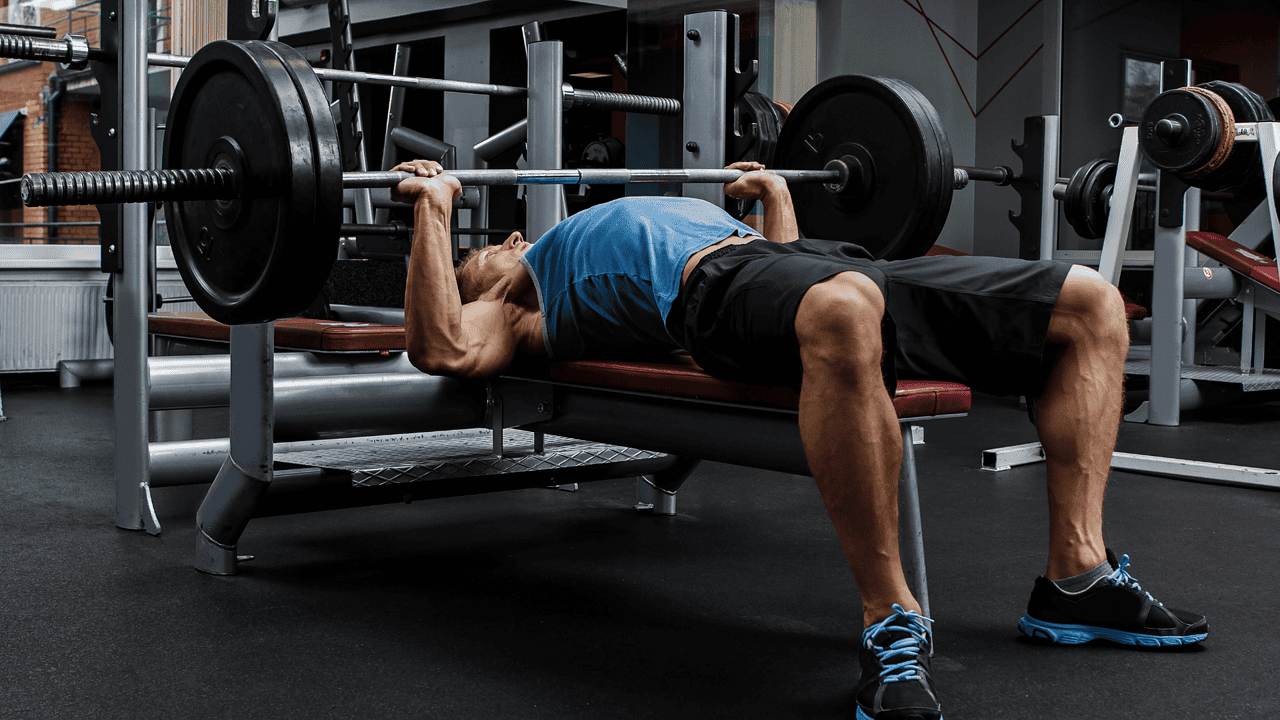
While you might hear some people poking fun at the bench press, that has more to do with some guys’ tendency to focus too much on “chest day” (and how much they can bench) while neglecting other areas of the body. But the bench press is a very important exercise for building strength and muscle, so make sure you give it the attention it deserves.
The bench press is really important for upper body strength maintenance as it helps preserve chest, shoulder, and triceps strength and muscle mass, which naturally diminishes with age. This upper body strength is crucial for everyday pushing movements and maintaining independence. When properly performed, bench press also engages stabilizer muscles throughout the upper body and core, helping maintain balanced strength and reducing risk of injury.
Like all of these exercises we’re talking about, you should start out with lighter weight and work on developing proper form before you start going heavy. For the bench press you can also start out with dumbbell bench presses before making the move to the barbell. The freedom of movement you’ll experience with dumbbells will let you find a natural pressing angle that works with your shoulder structure.
Speaking of shoulders, maintaining a stable 30-45 degree angle with your upper arms (rather than flaring them out) during bench press can make an enormous difference in your shoulder health. It’s a small adjustment that can help you continue benching without pain.
Rows
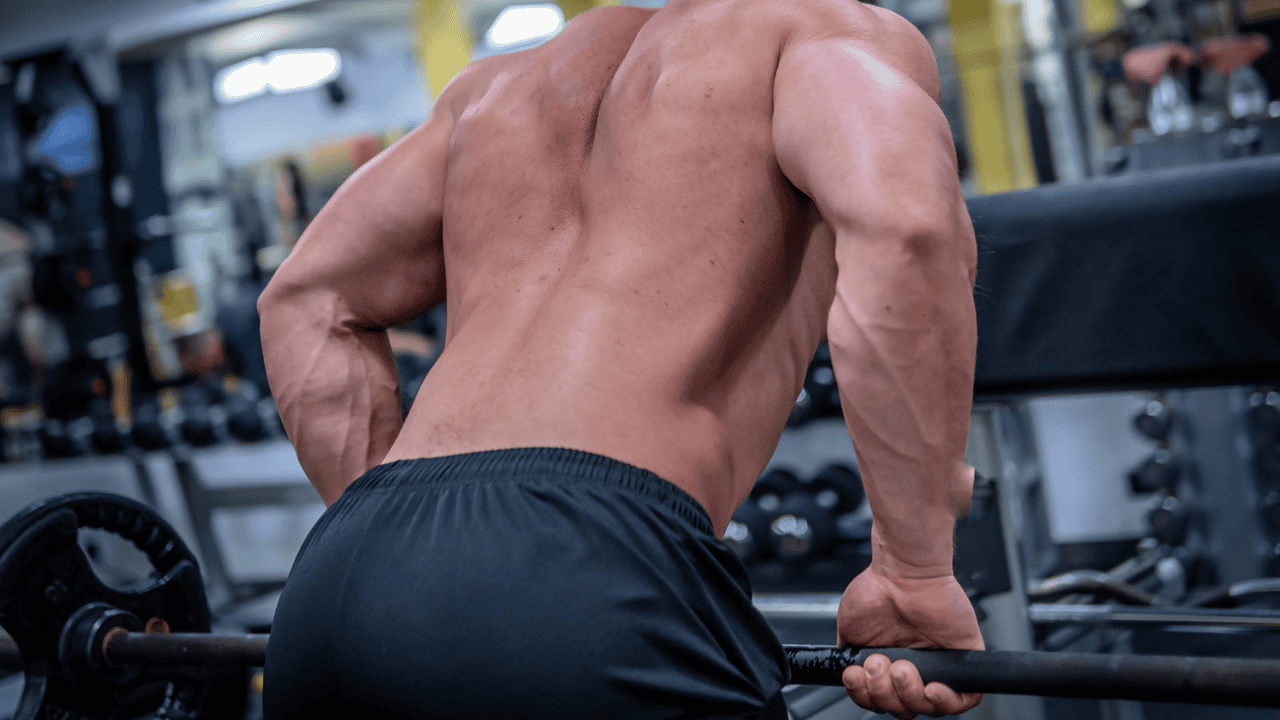
Rows might just be the most underrated compound exercise, but they’re absolute gold for posture and back health. The key is variety, and you have lots of options with things like bent-over barbell rows, seated cable rows, and chest-supported dumbbell rows.
Here are a couple of quick tips for rows: First, try to start each rep from a dead stop. This eliminates the beneficial effects of momentum and forces those mid-back muscles to do all the work. Second, when using dumbbells, try single-arm versions instead of double-arm versions because it allows better focus on engaging the lats on each side and helps prevent shoulder elevation.
Before we move on from compound exercises, please remember that you need to do a proper warm-up before your training session. I recommend 10-15 minutes of dynamic movement, ideally covering the whole body but definitely focusing on the specific muscles and joints you’re about to work, before touching any weights. Your joints will thank you, trust me.
And I can’t say it enough… for all these movements, keep your goals in mind and don’t try to be a hero. Dropping the ego and focusing on form yields way better results than chasing heavy weights. Start with about 60% of what you think you can handle, perfect the form, and then gradually increase the load. This approach will help you build and maintain strength while staying injury-free.
Remember, these exercises are meant to be foundations of your routine, not tests of your maximum strength. Focus on quality repetitions, maintain proper breathing patterns, and always listen to your body’s feedback. Some days you’ll feel stronger than others, and that’s perfectly normal. The goal is consistent, sustainable progress, not breaking records every session.
Upper Body Exercises That Protect Your Joints
A big enemy of resistance training and progress for anyone, but especially for us older guys, is injury. Between the various joints and the muscles themselves, there’s a lot of opportunity for things to go wrong. When it comes to the upper body, a place where I see a lot of guys have problems is their shoulders. To help avoid those shoulder tweaks, try to focus on joint-friendly upper body training. It’s amazing how a few smart modifications can completely transform your workout experience.
One such modification is to focus on neutral-grip exercises. I already hinted at this a bit when talking about the bench press, but switching from barbell presses to dumbbell presses and maintaining a proper angle with your arm can do wonders for your shoulders. Taking that a step further, switching to neutral-grip presses (where your palms face each other) can really put your shoulders in a much more natural position. So whether you’re already doing barbell presses and they’re causing you some discomfort or you’re just starting out, it might be a good idea to go with neutral-grip dumbbell presses. You’ll likely find that the difference in shoulder comfort is night and day.
Speaking of shoulder-friendly pressing, cable machines can be your best friend. The constant tension and adjustable angles make cable chest presses incredibly joint-friendly. Set the cables slightly below shoulder height for the perfect blend of chest activation and shoulder safety. You’ll feel a much better connection with your pecs while avoiding shoulder discomfort.
Pull-ups are another exercise where a neutral grip can make a big difference. A lot of folks struggle with traditional pull-ups, because… well… they’re hard! They can also be hard on the joints, but they’re also an incredibly beneficial exercise that you should definitely be doing. So if you struggle with pull-ups, don’t be scared or skip them. Try starting with band-assisted pull-ups with a neutral-grip. Then as your strength improves, gradually reduce the band assistance but keep the neutral grip position. This will allow you to build up your pull-up ability while the neutral grip puts way less stress on your elbows and shoulders compared to the standard wide grip.
If we’re talking about shoulder health and shoulder injuries, we have to talk about the rotator cuff. This is a part of the body that is often neglected in training, and you don’t want to find out the hard way how important the rotator cuff is. One thing you can do for the rotator cuff is incorporate face pulls in every upper body session. Just make sure to use light weight and focus on squeezing your shoulder blades together at the end of each rep.
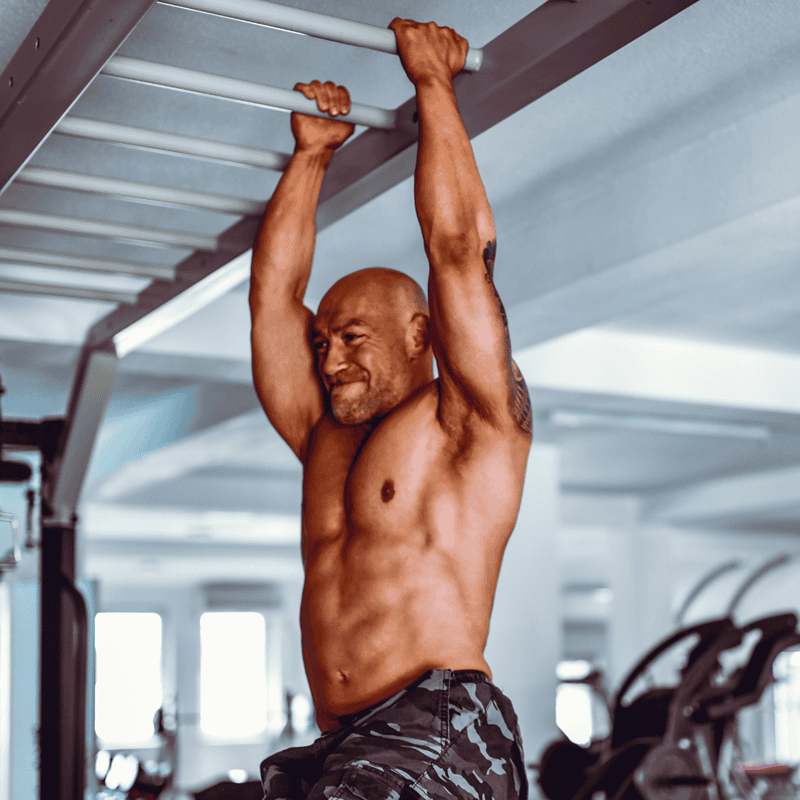
Another exercise that can be effective is the cable external rotation. Start with your body perpendicular to the cable pulley and take the handle in your hand farthest away from the cable pulley with your upper arm by your side and your elbow bent at 90 degrees. Then make small and controlled movements to rotate your hand and shoulder away from the pulley. Just don’t try to use too much weight here. Remember, your rotator cuff muscles are relatively small; they don’t need heavy loads to get stronger.
Here are a few final thoughts about upper body training before we move on to the lower body:
- Doing your rotator cuff work at the beginning of your workout, rather than at the end, can make a huge difference. It’s like giving your shoulders a little wake-up call before the heavy lifting starts. Just 5-10 minutes of targeted rotator cuff work can significantly improve your pressing and pulling performance.
- For those dealing with existing shoulder issues, try bottoms-up kettlebell exercises. The instability of holding a kettlebell upside down forces those small stabilizer muscles to work overtime. Start light though and don’t get too ambitious with the weight.
- Temperature really matters for joint health, so try doing your workouts later in the day when possible, as your joints are naturally warmer and more flexible. If you must train in the morning (or you just like training in the morning), spend extra time warming up. If you’re not slightly sweating before touching the weights, it’s likely that you haven’t warmed up enough.
I hate to sound like a broken record, but it’s always worth repeating that consistency beats intensity every time. It’s better to do moderate-weight, joint-friendly exercises three times a week than to push heavy weights until something starts hurting. Focus on quality movement patterns, respect your body’s signals, and remember that sustainable progress is the goal. Protecting your joints doesn’t mean you can’t build strength and muscle. It just means being smarter about how you train so that you can continue to make progress well into your 50s and beyond, all while staying pain-free and maintaining healthy joints.
Lower Body Exercises for Power and Stability
Have you ever heard someone joke about “skipping leg day”? Unfortunately, skipping leg day is a real phenomenon for many men. Please, please, please don’t be that guy. Building and maintaining leg strength through lower body training is critical to maintaining balance, stability, and mobility as we age. I already mentioned that squats are a key compound exercise that you need to be doing, but another great thing I think you should include is single-leg training.
An exercise that I never did in the past but have become a big fan of these days is the Bulgarian split squat. They’re a great way to build strength in your lower body and address strength imbalances between your two legs, while simultaneously working on your overall balance. Like so many other exercises we talk about, when it comes to Bulgarian split squats you should focus on mastering your form and do that using just your body weight before you try to add additional weight (e.g. by holding dumbbells or kettlebells). Trying to load up too heavy too soon is just asking for trouble (and possibly injury).
An exercise that I never did in the past but have become a big fan of these days is the Bulgarian split squat. They’re a great way to build strength in your lower body and address strength imbalances between your two legs, while simultaneously working on your overall balance. Like so many other exercises we talk about, when it comes to Bulgarian split squats you should focus on mastering your form and do that using just your body weight before you try to add additional weight (e.g. by holding dumbbells or kettlebells). Trying to load up too heavy too soon is just asking for trouble (and possibly injury).
When doing single leg training, whether that’s Bulgarian split squats or even something like basic lunges, something you can add to help challenge and develop your balance is the use of offset loading. Holding a dumbbell or kettlebell on the opposite side of your working leg creates an amazing core challenge. It might feel awkward at first and you might look like a wobbly mess, but it’s incredible for developing real-world stability and strength.

When doing single leg training, whether that’s Bulgarian split squats or even something like basic lunges, something you can add to help challenge and develop your balance is the use of offset loading. Holding a dumbbell or kettlebell on the opposite side of your working leg creates an amazing core challenge. It might feel awkward at first and you might look like a wobbly mess, but it’s incredible for developing real-world stability and strength.
We talked about the hip hinge earlier when we talked about deadlifts, and the hip hinge movement is a key component of nearly all of these lower body exercises. An exercise you can use to help train and strengthen this basic movement is the kettlebell swing. Just make sure that you use, you guessed it, proper form. The power in a kettlebell swing should come from explosively driving your hips forward, not from flexing your lower back or lifting with your arms. Mastering and strengthening your hip hinge movement will lead to improvements in other lower body exercises and cause your posterior chain strength to skyrocket.
Since we’ve now mentioned squats, Bulgarian splits squats, kettlebell swings, deadlifts, and RDLs, let’s talk about one other exercise that can be good for your hip hinge and posterior chain development: good mornings. I wouldn’t recommend starting with good mornings as part of your routine because they can injure your back if your form isn’t on point, especially if you’re doing traditional good mornings with a weighted barbell. But if you do want to give good mornings a try, work on your form with body weight first (hinge your hips and feel that stretch in your hamstrings while maintaining a slight bend in your knees) and then use a resistance band to gradually increase the load over time. This can give you the benefits of weighted good mornings without the risk associated with using a barbell.
Our discussion of lower body training wouldn’t be complete without talking about the lower part of the leg. In a nutshell, don’t neglect calf training. There will be some activation of the calf muscles in pretty much all of the lower body exercises we’ve already discussed, but that doesn’t mean you shouldn’t also do some targeted calf training. Strong calves are essential for ankle stability, which is important for exercising, sports, hiking, or simply walking around. So dedicate some time to doing both standing calf raises and seated calf raises because those exercises target different muscles of the calf and will help give you more complete calf development. You can also vary your foot position (e.g. point your toes slightly in, straight ahead, and slightly out) during different sets so that you hit the calf muscles from all different angles.
Power and stability go hand in hand. Lower body training isn’t just about getting stronger – it’s about building stability and control that carries over into daily life. Incorporating these exercises with proper form and progression, you’ll build a stronger, more resilient lower body that serves you well both in and out of the gym.
Before we move on from the lower body, I think it’s worth repeating again… make sure you do a proper warm up before jumping into your leg training. Spend at least 10 minutes doing dynamic stretches and mobility work and get your body warm before any lower body exercises. Walking lunges and leg swings can be great for this.
Core and Functional Movement Exercises
It took me years of doing crunches and sit-ups to finally discover what real core training is all about. Spoiler alert – it’s not about getting a six pack (though that might be a nice perk). It’s about building strength in the various muscles of the core that provide your body with stability in different ranges of motion.
So core stability training should be a key area of focus and anti-rotation exercises are a great place to start. Pallof presses using a resistance band or a cable machine can be great for this, but, like with nearly all exercises, start lighter than you think you need to, focus on proper form, and build up from there. You can also do tall kneeling anti-rotation holds to create an amazing connection between your core and lower body. Start in a tall kneeling position with a cable or resistance band at chest height, and simply hold against the rotational force. It feels easy until about 30 seconds in – then the real work begins.
A simple exercise that can help build real-world, functional core strength is the loaded carry. I mean – what’s more real world than picking up and moving something (e.g. a box, furniture, etc)? Farmer’s walks are a simple but effective option for this. Just grab a dumbbell or kettlebell in each hand and walk. I think you’ll find it’s more challenging than it sounds, but if you want to increase the level of difficulty try using uneven loads (heavier weight on one side). This imbalance will really challenge your core stability as you work to keep your body straight as you walk with the uneven load.
Another take on this that screams “real world” is the suitcase carry, which is essentially a one-arm farmer’s walk. As the name suggests, suitcase carries perfectly mimic everyday activities like carrying suitcases or groceries. Building strength and stability with suitcase carries can really lower your risk of injuring your back during daily activities. The trick is to focus on staying as tall as possible while walking (imagine balancing a book on your head).
Now let’s talk about a well-known staple of core training – the plank. Planks can be great for building core strength, stability, and endurance, but you really need to focus on quality (i.e. good form) over duration. For example, a variation like the RKC plank (where you actively squeeze your glutes and abs) for 20-30 seconds is far more effective than a marathon hold with poor form. And don’t forget to try other plank variations, including planks with additional movement patterns. For example, you can do side planks and you can also do side planks with hip dips.
Before we move on from core training, let me mention an exercise that probably falls in the “exercises you should absolutely be doing but aren’t” category – the Turkish Get-Up. This is a movement pattern that’s more challenging than it might look, especially when you move on from body weight to the inclusion of a kettlebell, but it’s definitely worth working through whatever awkwardness or klutziness you might experience at first and include this exercise in your routine. Just make sure to start with body weight until you master the movement pattern and then gradually add/ increase weight. You don’t want to accidentally drop a kettlebell on your face.
Your core is so much more than just your abs. It’s the foundation for all movement, and training it properly means thinking beyond crunches and sit-ups. So the main lesson with core training is that it’s not about how your abs look – it’s about how your entire torso functions as a unit. Focus on movements that challenge stability, resist rotation and build the kind of real-world strength that serves you in everyday life, not just in the gym.. These are the exercises that will keep your back healthy and your body moving well for years to come.
Conclusion
At the age of 40 or beyond, strength training is crucial. Remember, strength training after 40 isn’t about lifting the heaviest weights. It’s about training smarter, not harder, and building real-world functional strength that will serve you for years to come and support overall health. By incorporating these exercises into your workout routine, you’ll be well on your way to building head-to-toe sustainable strength that lasts. So get going. You can use our “5 Tips to Improve Health” as a starting point. Enlist the help of a personal trainer if you need it, but get going. Warm up, start gradually, focus on form, mix in a rest day and some cardio here and there, and listen to your body. It’s never too late to gain muscle and start getting stronger!

